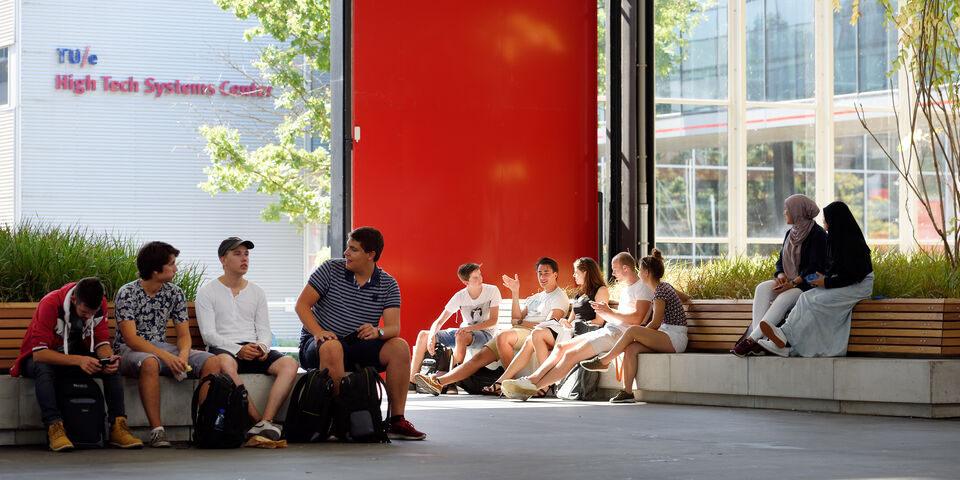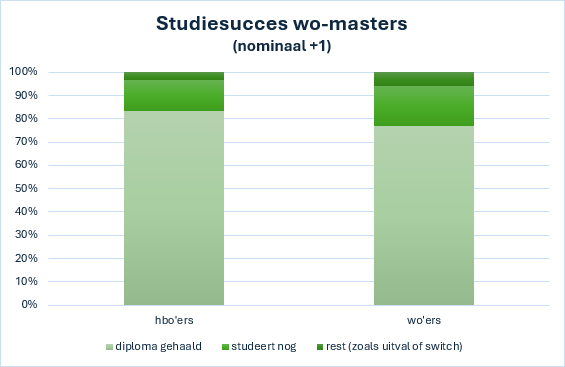Every year, around five to six thousand students with a bachelor’s degree from a university of applied sciences start a university master’s program, sometimes after completing a pre-master’s program. One in ten master’s students at Dutch universities comes from a university of applied sciences.
Figures on academic success in master’s programs are not easy to find. Universities of the Netherlands (UNL) does not publish them on its website. However, DUO now shares relevant data in a recent trend report.
That report shows that students from universities of applied sciences perform quite well. Within a year of the nominal study period, about 83 percent of them obtain their master’s degree. Among students who entered with a university bachelor’s degree, that percentage is lower—77 percent finish within the same timeframe.
After an additional three years, the graduation rate in both groups rises to over 90 percent. Dropout rates are also similar: around 4 percent eventually quit. Students with a university background switch master’s programs slightly more often, something that university of applied sciences graduates rarely do.
Viewed with suspicion
Government policy discourages graduates from universities of applied sciences from pursuing a university master’s program. They are not eligible for the basic student grant in such programs, although they would receive it for a master’s program at a university of applied sciences.
Universities themselves also tend to view incoming students from universities of applied sciences with some suspicion. A quarter of academic master’s programs do not admit them at all—not even after they have completed a pre-master’s program. Some program directors even see these students as a potential threat to study success and educational quality, according to a study published earlier this year by the Dutch Education Inspectorate.
This article was translated using AI-assisted tools and reviewed by an editor.



Discussion